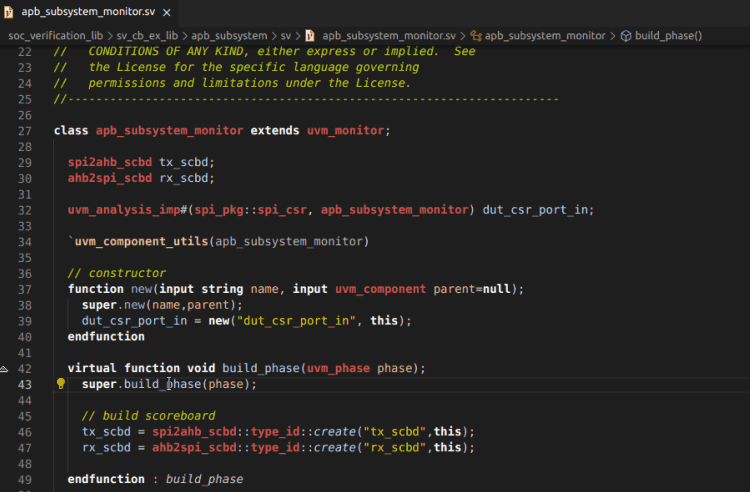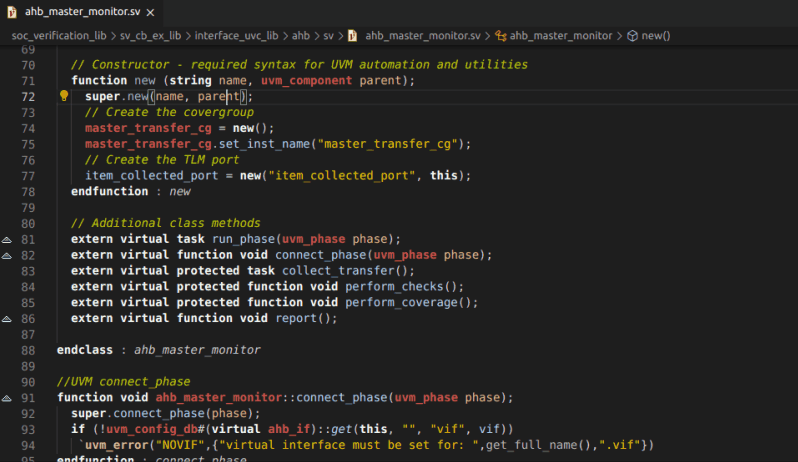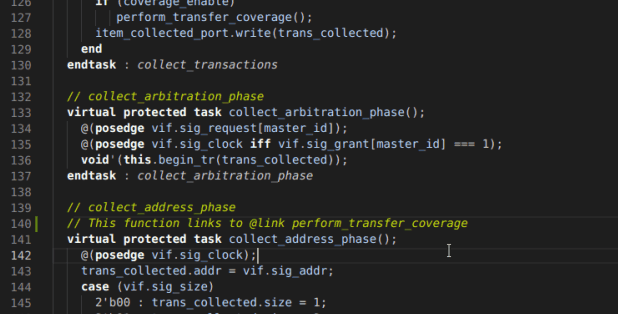Hyperlinks
Hyperlinks are available for all classes, modules, methods, fields, signals, macros, etc. in the source code files that DVT analyzes in your project.
Go to Declaration
Place editor cursor over an identifier and use the Go to Declaration command to go to the declaration of the element.

Go to Definition
Place editor cursor over an identifier while holding down Ctrl. The identifier becomes a hyperlink, which jumps to the definition of the element.
You can also use the Go to Definition command.

Go to Type definition
Place editor cursor over an identifier and use the Go to Type Definition command to go to the type definition of the element.

Hyperlinks in Comments
You can define hyperlinks in comments using the @link or @see pragmas, for example:
// @link uvm_pkg::run_test
// For more details @see spi_if.miso and @see spi_if.mosi
Hover the hierarchical id specified after the pragma with the mouse cursor while holding down Ctrl and Click to go to the element’s declaration.
The hierarchical identifier following @link or @see is of the form:
[<package_name>::<type_name>.<inner_type_name>.]<element_name>
where <element_name> must be a type (class, struct, module, entity, interface, etc.) or a type member (method, field, event, signal, port etc.).

Show First Implementation
Place the mouse cursor on a method / event and use the DVT: Show First Implementation command to open its first is layer, declared using is undefined / is empty. Similarly for events, opens the first layer if definition does not include implementation..
Show When Subtype
Place the mouse cursor on a layer and use the DVT: Show When Subtype command to open its first explicit implementation.
Show Determinant
Place the mouse cursor on the determinant field identifier and use the DVT: Show Determinant command to open the determinant field declaration.
Show Bindings
Place the mouse cursor on a port and use the DVT: Show Bindings command to show all bound method ports.
Jump to an Imported File
Place the mouse cursor over an imported file while holding down Ctrl. The identifier becomes a hyperlink, which jumps to the file.

Jump to a Macro Definition
Place the mouse cursor on a macro while holding down Ctrl. The identifier becomes a hyperlink, which jumps to the macro definition.
